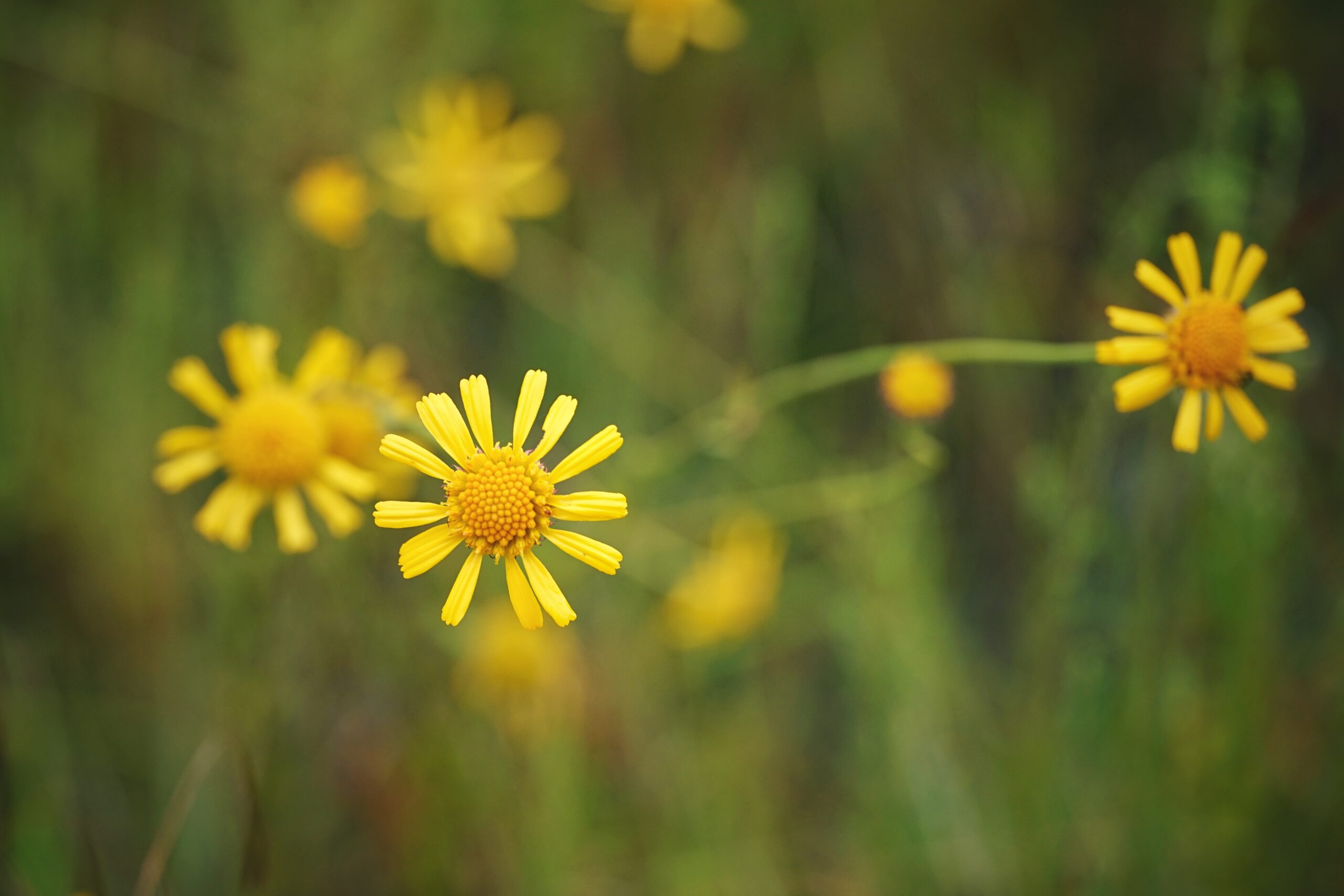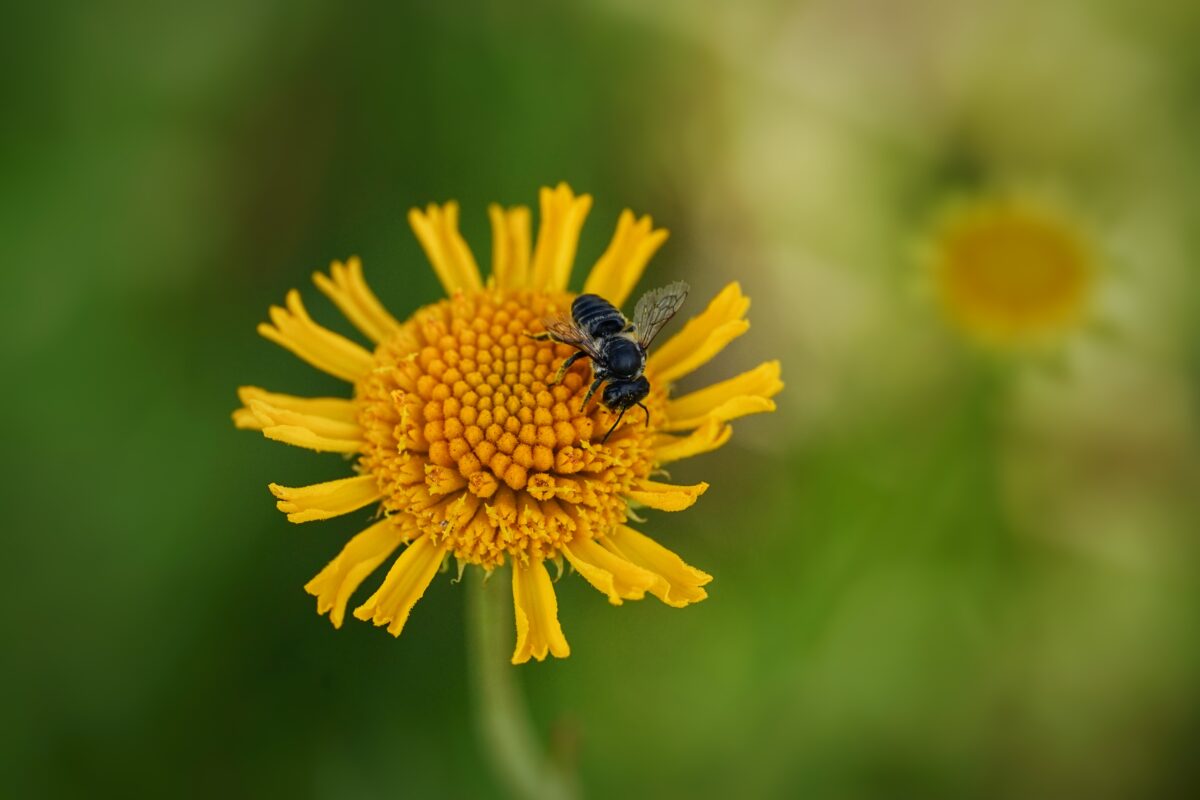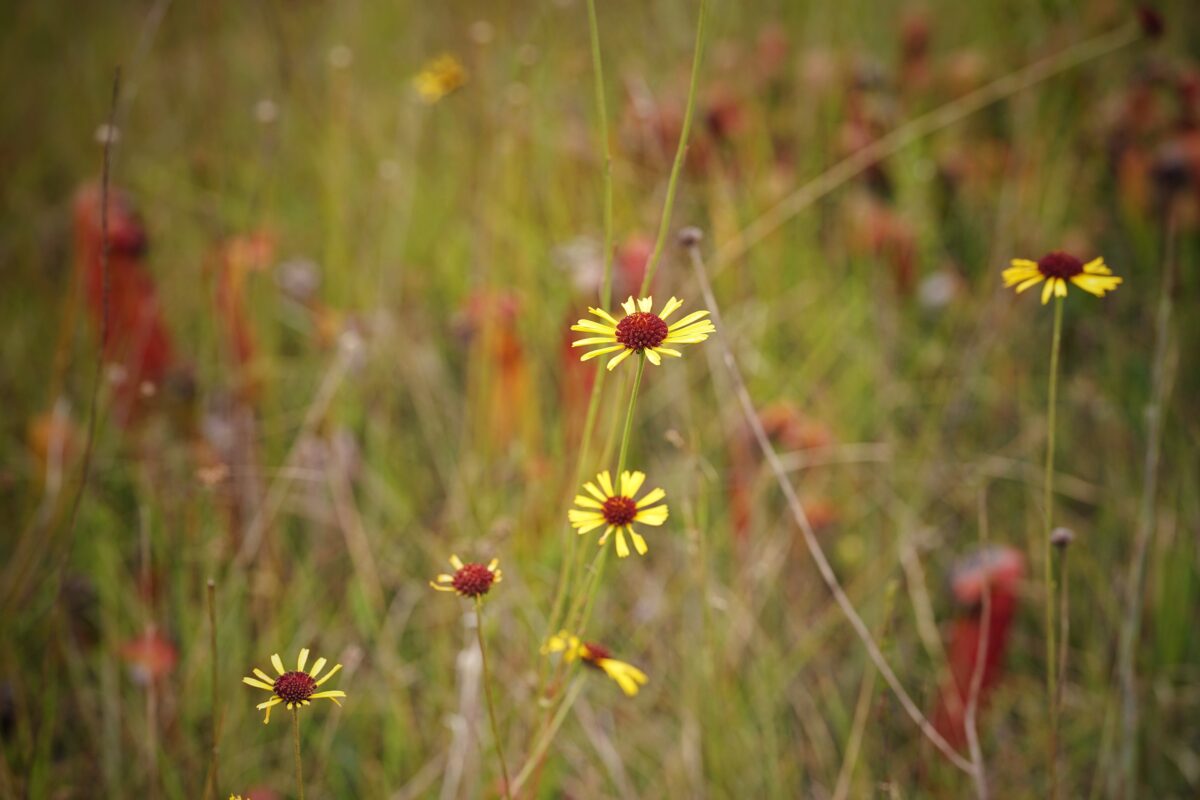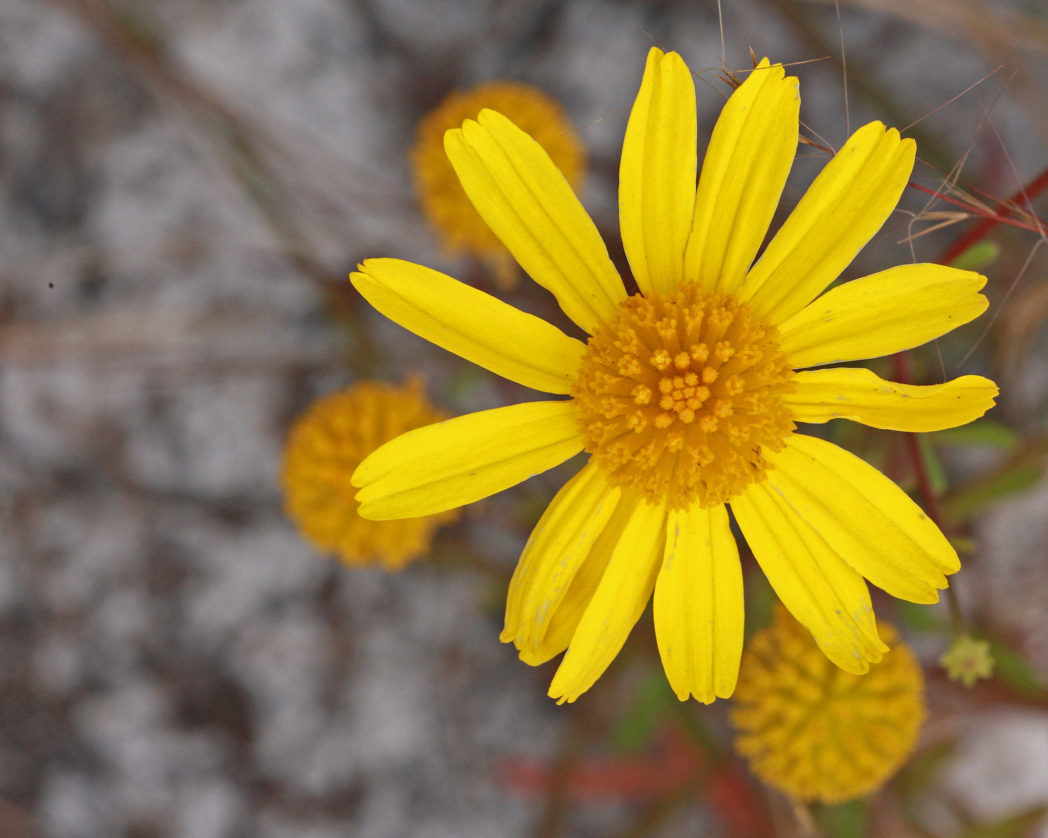Oneflower honeycombhead
Pictured above: Oneflower honeycombhead (Balduina uniflora) by Emily Bell. Click on terms for botanical definitions. View post as a PDF.
Endemic to the coastal plain region from North Florida and southeast Georgia west to eastern Louisiana, and northward reaching into North Carolina. Oneflower honeycombhead (Balduina uniflora) can be found in wet pine savannahs, flatwoods, and along bog margins. It is pollinated by bees and butterflies; small birds such as the Henslow’s sparrow have been observed feeding on the seeds.
Spatulate leaves of up to 4 inches long form a basal rosette from which a single thin 2-3 foot stem emerges. Stems have very reduced elliptical leaves and sometimes will branch. True to both its common and scientific name, a single flower forms at the end of each stem. Each flower consists of many yellow ray and disk florets. Eventually, the disk florets dry up and form what resembles a honeycomb.
Family: Asteraceae (Aster, composite or daisy family)
Native range: Across north Florida
To see where natural populations of Oneflower honeycombhead have been vouchered, visit florida.plantatlas.usf.edu.
Lifespan: Perennial
Soil: Wet, muck to sandy peat
Exposure: Full sun
Growth habit: Herb
Oneflower honeycombhead is not commercially available. Visit a natural area to see it.
For information on other Balduina species, see:




